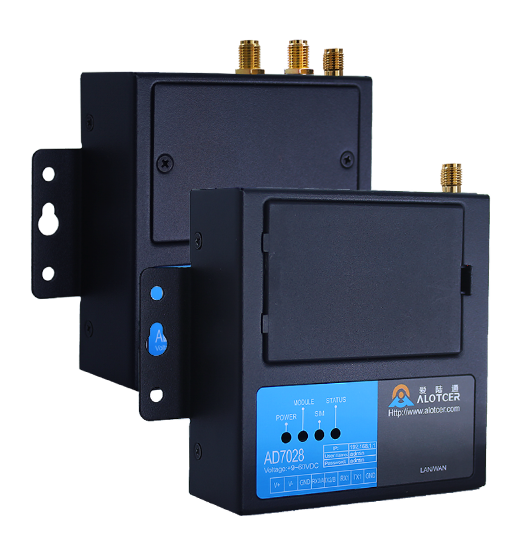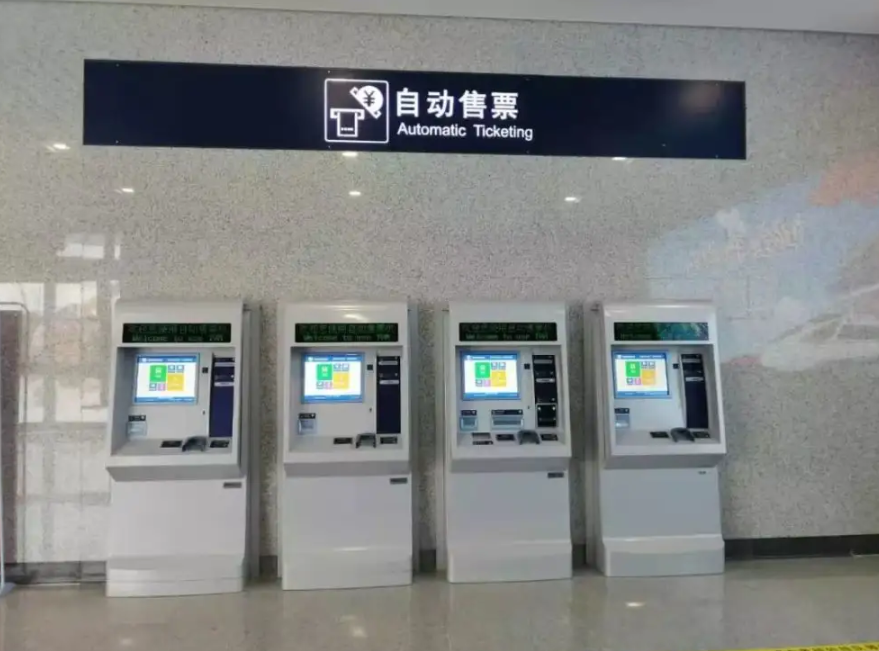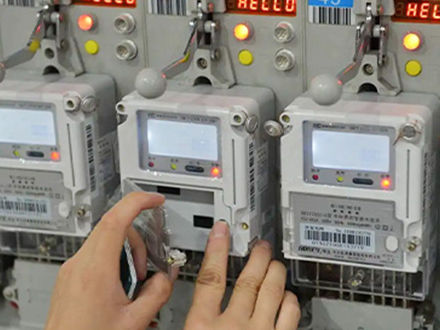86-18144159516
86-18144159516

Modbus is a communication protocol that has become a standard in industrial automation and control systems. It provides a client-server type communication between devices connected on different types of networks. Modbus enables easy communication without complex configuration and offers plug-and-play simplicity for connecting industrial devices.
There are two widely used variants of Modbus - Modbus RTU and Modbus TCP. Both protocols serve the same purpose of enabling communication between industrial devices. However, there are some key differences between the two that users must consider before deciding which one to implement.
This article provides a detailed comparison of Modbus RTU and Modbus TCP. It analyzes the key parameters that differentiate the two variants and helps you determine the right protocol for your application.
Modbus RTU (Remote Terminal Unit) uses serial communication over RS232 or RS485 to connect devices. It transmits data in a format. Modbus TCP (Transmission Control Protocol) uses Ethernet networks for communication and adopts a client-server model. It encapsulates Modbus messages in TCP packets for transmission over networks.
Modbus RTU
Modbus TCP
Next, let us look at some of the key differences between these two protocols.
The primary difference between Modbus RTU and Modbus TCP is in their communication medium.
Modbus RTU uses a serial connection for data transmission between devices. The most commonly used connections are RS232 and RS485 serial ports. RS232 allows point-to-point communication between two devices while RS485 enables a single master device to communicate with upto 32 slave devices in a multi-drop network.
The advantage of serial communication in Modbus RTU networks is that it allows connections over long distances up to 1200 meters. Modern USB to RS485 converters provide plug-and-play connectivity. However, the downside is that any fault in the network cable or loose connections can bring down the entire network.
Modbus TCP uses Ethernet TCP/IP networks instead of serial cables. This allows placing devices on a LAN or even over the internet for remote communication. TCP protocol and IP addressing ensure reliable delivery of data packets.
The main advantages of Modbus TCP are ease of integration and scalability. Adding new devices is as simple as connecting them to an Ethernet switch. The networks can be easily extended by using routers. As TCP/IP networks form the backbone of modern communication infrastructure, Modbus TCP can leverage this for industrial data transfer. However, standard Ethernet networks only allow connections up to 100 meters unless additional networking equipment is deployed.
Communication mode refers to the direction of data exchange between the Modbus devices.
Modbus RTU uses a traditional master-slave architecture. Only a master device can initiate requests, while slave devices only respond to received commands. This allows centralized control but can also lead to a single point of failure. The entire network is affected if the master device malfunctions.
Modbus TCP employs a client-server model for communication. Any device can act as a client to initiate requests to server devices. Servers process requests and send back responses accordingly. This peer-to-peer relationship provides better redundancy and eliminates risks related to a centralized master. Adding new clients is also easier without needing to update a centralized controller.
Encoding refers to the format applied to frame and transfer data between devices on Modbus networks.
Modbus RTU uses a compact representation for data encoding. Binary encoding has a smaller data size as compared to ASCII. This allows faster data transfers while also reducing transmission overhead on bandwidth-limited serial links. However, debugging and troubleshooting issues can be challenging due to the format.
Modbus TCP can use both and ASCII encoding formats. Binary encoding provides efficiency similar to Modbus RTU transfers. ASCII encoding uses human-readable text format which makes debugging easier. However, ASCII data requires more bandwidth and has slower throughput than transfers. Many Modbus TCP implementations prefer encoding for better performance.
Addressing refers to the method used to represent individual devices on the Modbus network.
Modbus RTU does not define a standard addressing scheme. It relies on physical parameters of serial connections to map devices. For example, slaves are identified by their positions on a multi-drop RS485 network. This limits the number of supported devices and makes adding/replacing devices complex.
Modbus TCP uses IP addressing to represent individual clients and servers. Each device gets assigned a unique IP address which serves as its identifier on the network. TCP ports are used to map different Modbus resources or services provided by the same device. IP addressing extends device support and simplifies management of large networks.
The communication medium and encoding method also impact mechanisms for error detection and recovery.
Modbus RTU networks depend on the Cyclic Redundancy Check (CRC) algorithm to verify integrity of transmitted data frames. The CRC checksum gets calculated by the sender and appended to frames. Receivers recalculate CRC on their end and compares it to detect errors.
Modbus TCP gets the error detection feature inherently as part of the TCP protocol used for transfers. TCP verifies sequencing of packets and recovers lost packets via retransmissions. Additionally, both Modbus RTU and TCP provide function codes in messages to detect application layer errors.
Modbus TCP offers better reliability by leveraging on features of the TCP/IP stack. Recovery capabilities of TCP overcome limitations of serial networks in Modbus RTU. However, the trade-off is potentially increased response times during retries and reconnections.
There are also some key metrics related to performance where Modbus RTU and TCP differ. These also impact how the network bandwidth gets utilized and what parameters can be tuned for optimization.
Bandwidth Utilization
Modbus RTU messages encapsulate data payloads as part of the frame structure defined by the protocol. As such, a major chunk of bits transmitted over serial links consists of actual device data. The headers and footer overheads are very low enabling efficient bandwidth utilization.
In contrast, Modbus TCP data gets embedded inside the TCP segment. Additionally, IP and Ethernet headers also account for transmission overheads. In practical deployments, overheads can consume up to 50% of the bandwidth in Modbus TCP networks.
Latency & Response Times
Typical Modbus RTU networks provide very low latency of around 2-3 milliseconds. Response times tend to be consistent irresverctive of network traffic or size of requests. Serial links offer dedicated bandwidth eliminating external bottlenecks.
Modbus TCP performance depends on shared networks it operates over. While transfers are very fast with low network congestion, large requests or high traffic can cause response times to spike leading to high jitter. Additional tuning via QoS policies may be required for consistent experience.
Tuning Parameters
For Modbus RTU, the communication parameters such as baud rate, stop bits and parity can be tuned as per noise or response requirements. Faster baud rates speed up transfers while parity bits tradeoff reliability for efficiency.
In Modbus TCP networks, parameters related to timers and retry counts provide optimization knobs. Values set as per the topology ensure timely error detection and recovery while avoiding false detections. For instance, longer timeouts are suitable for larger networks.
When it comes to deployment, Modbus TCP provides huge simplifications over Modbus RTU implementations.
Configuring Modbus RTU requires setting up serial ports of devices for communication parameters. Software drivers may need customization based on hardware behavior of each product. Troubleshooting cable issues or electrical noise requires additional tools & instrumentation.
Modbus TCP networks only need Ethernet connectivity along with IP configuration. Leveraging existing infrastructure makes wiring effortless while also providing remote accessibility. Diagnosing problems can rely on traditional TCP/IP tools for faster issue resolution. Overall, this cuts down deployment costs & complexity.
Additionally, Modbus TCP offers seamless forward compatibility. New devices can directly interface modern automation systems over Ethernet. Serial ports employing older standards like RS485 pose challenges in future upgrades requiring additional converters.
The limitations in terms of extending the network also differ significantly amongst the options. This becomes especially important for fast growing implementations.
Distance Constraints
Serial cables used in Modbus RTU have an upper limit of around 1000 to 1200 meters electrically. While repeaters extend the distance, they also amplify noise impacting reliability. Fibre-optic repeaters are costly propositions.
As Modbus TCP relies on standard Ethernet infrastructure, distances can easily scale across geographical regions spanning hundreds of kilometers. Existing networking equipment provides simple, cost-effective long-range connectivity.
Device Support
Native Modbus RTU using RS485 links can only support up to 32 slave devices on a single network. Expanding to more devices requires additional repeaters or gateways which add to cost and complexity.
Modbus TCP does not enforce any such restrictions on device support. Large installations with hundreds of Modbus clients sharing an Ethernet switch are commonly found in the industry.
Another key differentiator between Modbus flavors is how device authentication and message encryption gets implemented to secure industrial data.
The Modbus RTU protocol is designed to work in isolated networks and assumes traffic between trusted devices. It does not define any inherent capabilities for authentication or encryption natively. Implementing these requires hardware upgrades or replacing existing Modbus Masters altogether.
Modbus TCP offers further standardization by adopting TLS for transport layer security. Devices support RSA, AES and SHA2 standards using X.509 certificates for robust authentication, confidentiality and integrity without infrastructure changes. However, the computation overhead may impact performance in some cases.
Finally, we look at some typical applications where either Modbus RTU or Modbus TCP gets preferred conventionally due to better suitability.
Modbus RTU works very well for communication between sensors, drives and controllers within a control cabinet enclosure. It saves wiring costs due to the multi-drop capability. Easy electrical isolation is an added benefit in noisy environments. For small autonomous systems like solar plants, Modbus RTU provides cost-effective monitoring.
Modbus TCP excels in applications requiring coordination between larger automation systems across plants. Some examples include centralized data logging, mining process control extending multiple shafts underground and remote management of geographically distributed water pumping stations. The ease of bridging sites via internet makes it convenient for such implementations.
We have covered a detailed feature-wise comparison highlighting key aspects differentiating Modbus RTU and Modbus TCP. Now we summarize some guidelines for selection depending on your application requirements.
Prefer Modbus RTU for:
Choose Modbus TCP for:
Ultimately, it comes down to balancing factors like cost, performance needs, scalability, ease of integration and manageability. We hope this article has provided you insights to pick the right flavor of Modbus protocol for your use case.
Both serial Modbus RTU and TCP/IP based Modbus TCP have their own merits and limitations. Using them judiciously in appropriate sections of the overall network can help extract best benefits from the modular Modbus ecosystem. With a right application-centric approach, Modbus enables building high performance industrial data communication fabric at optimized infrastructure costs.









 Sitemaps
Other Country
Sitemaps
Other Country